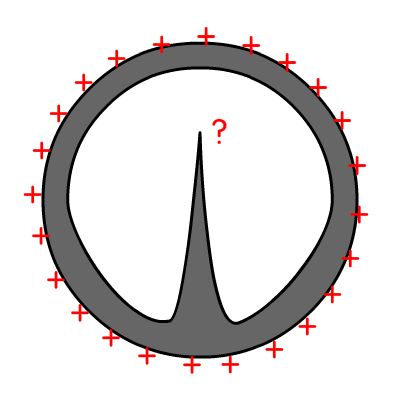For a electrostatic equilibrium state, we know charges only stay on the outer surface of the conductor.

But, how does the conductor know which side is outside?
If it's about the curvature, then what will happen to this shape?

If it's about the Gauss' law, then what if I poke a tiny hole in the surface? Will all the charges suddenly move to that pointy needle?

OK, so a tiny hole is not enough, what about extend the needle outside the surface? Will charges goto that needle this time?

This question can go even further (I'm not sure if I should post a new question):
What if the surface is a Klein bottle? How is the electrostatic field looks like in four dimension? Will the conductor failed to decide which side is outside in four dimension space?
Or, is the fact that conductor can decide its side, proved that electic field is limited to three dimension?
